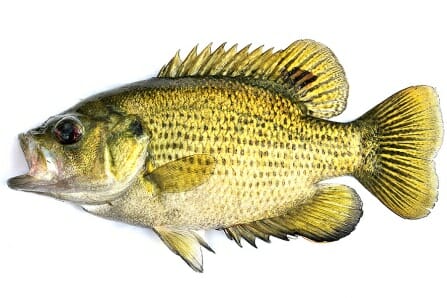
A rock bass. This stock image may not be republished.
Researchers have detected build-ups of human antidepressants in the brains of this fish species, among others, in the Niagara River, which links Lake Erie with Lake Ontario. The drugs enter rivers and lakes from treatment plants and sewage overflows, threatening aquatic life, scientists say.
BUFFALO, N.Y. — Human antidepressants are building up in the brains of bass, walleye and several other fish common to the Great Lakes region, scientists say. In a new study, researchers detected high concentrations of these drugs and their metabolized remnants in the brain tissue of 10 fish species found in the Niagara River. This vital conduit connects two of the Great Lakes, Lake Erie and Lake Ontario, via Niagara Falls. The discovery of antidepressants in aquatic life in the river raises serious environmental concerns, says lead scientist Diana Aga, PhD, the Henry M. Woodburn Professor of Chemistry in the University at Buffalo College of Arts and Sciences. “These active ingredients from antidepressants, which are coming out from wastewater treatment plants, are accumulating in fish brains,” Aga says. “It is a threat to biodiversity, and we should be very concerned. “These drugs […]
Full article: Antidepressants found in fish brains in Great Lakes region
More from the Anishinabek Nation and the Great Lakes:
Mayors, Anishinabek Nation Call for Stricter Rules in Great Lakes Withdrawals
Ojibwe Grandmother has walked 17,000 km to raise consciousness about water
Blue Water Bridge a potential crossing for U.S.-bound liquid nuclear waste
The great siphoning: Drought-stricken areas eye the Great Lakes
Controversial insecticides pervasive in Great Lakes tributaries
